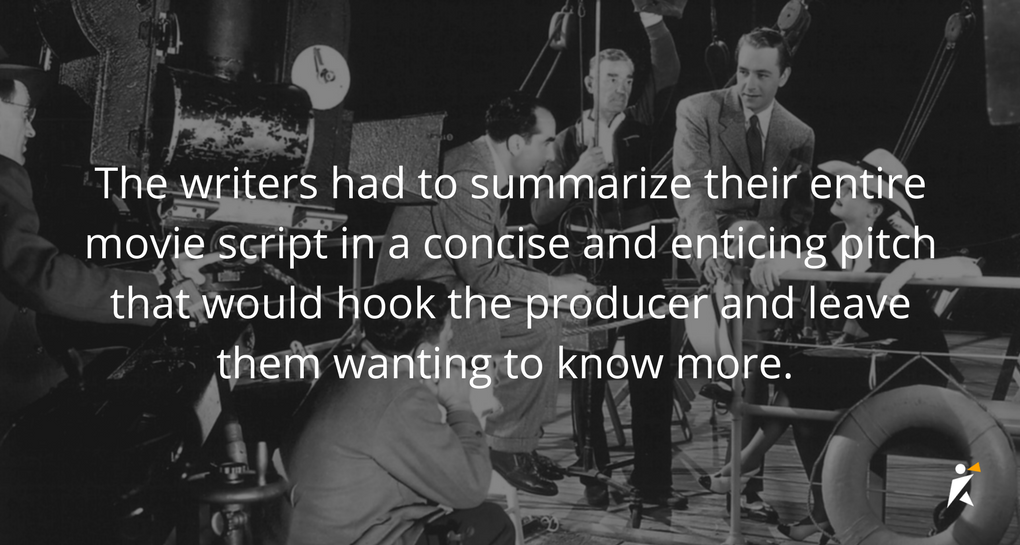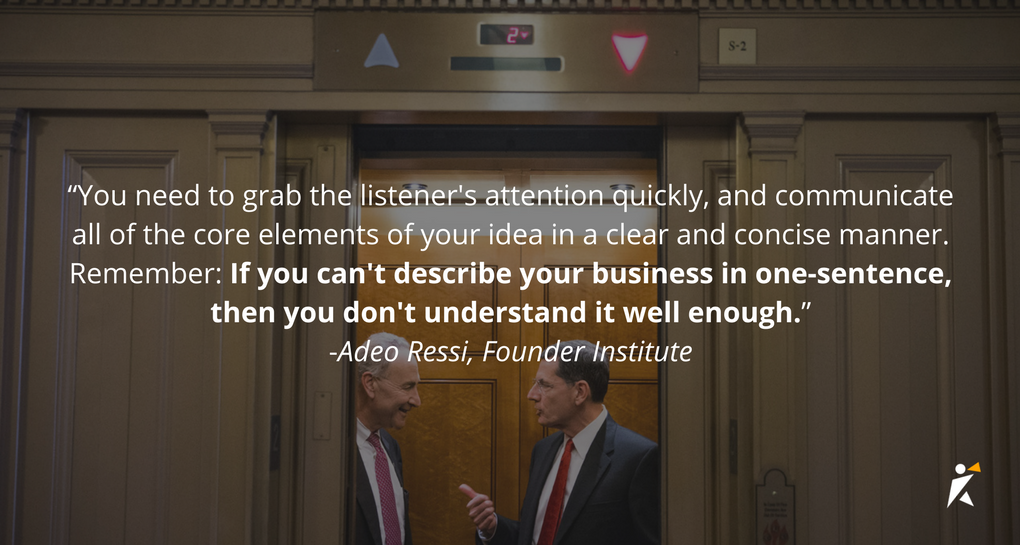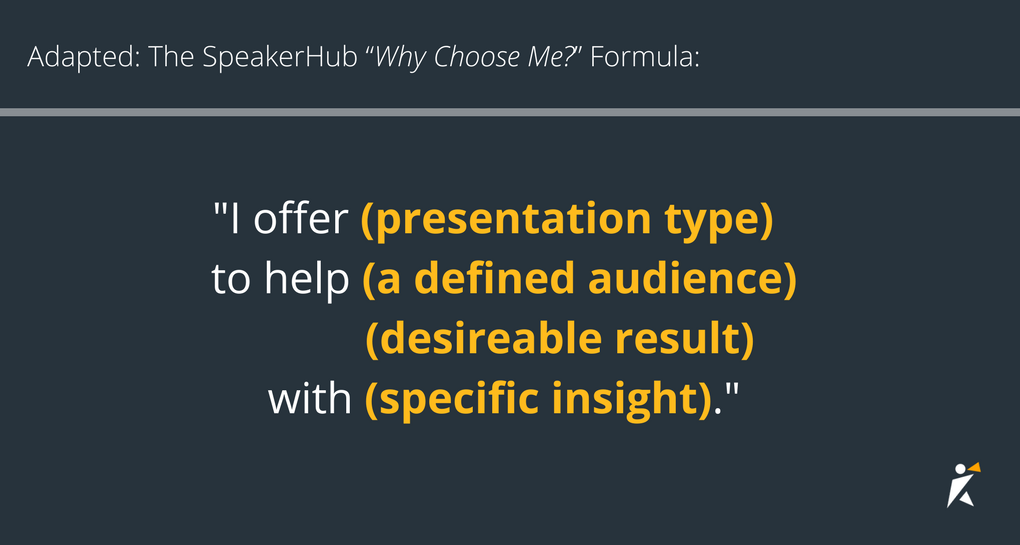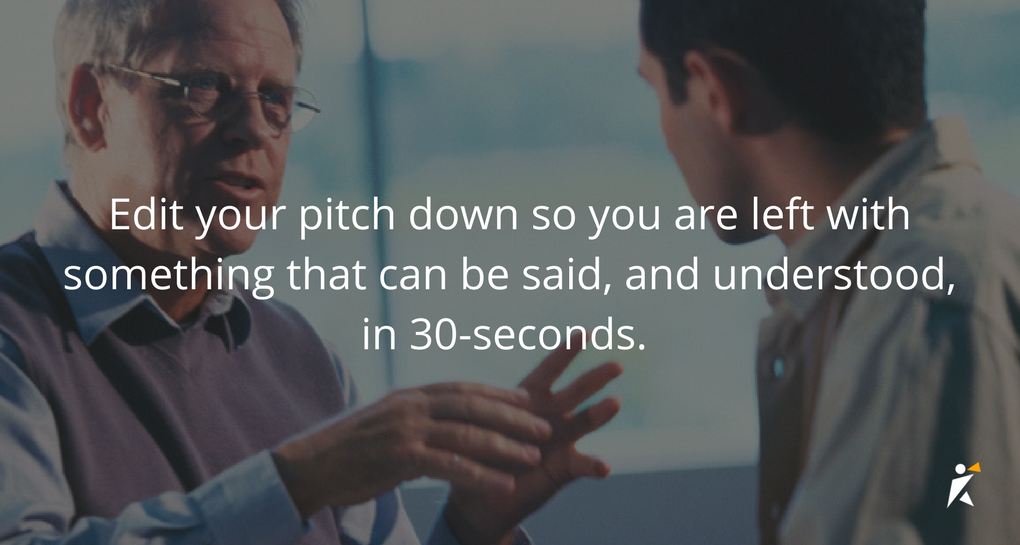How to create your elevator pitch and defining your “Why choose me” statement

Whether you want to call it a “30-second mission statement”, a “one-sentence pitch”, an “elevator pitch”, or a “why choose me statement”, we are fundamentally talking about the same thing: a concise and enticing explanation about what you do.
The birth of the term “elevator pitch” is at this point an urban legend with everyone wanting to claim a little bit of the story.
Here is the version we like the best: the elevator pitch dates back to the golden days of movie making and Hollywood. Screenwriters would attempt to get meetings with producers by cornering them in elevators, and would have the time between floors (somewhere between 30 and 90 seconds) to convince the producer to take a look at their script and have them agree to a second meeting.

The writers had to summarize their entire movie script in a concise and enticing pitch that would hook the producer and leave them wanting to know more.
But how important is it for you as a speaker to have one?
According to the Founder Institute’s Adeo Ressi, an expert in helping entrepreneurs get their business up and growing, having a 30-second pitch is very important.

“You need to grab the listener's attention quickly, and communicate all of the core elements of your idea in a clear and concise manner...Remember: If you can't describe your business in one-sentence, then you don't understand it well enough.”
-Adeo Ressi, Founder Institute
Being able to quickly share with event organizers and potential audiences what it is that you do, and why that’s important, is essential in getting booked and building a fanbase.
So how can you create a statement that gets to the heart of your message effectively?
They have created a formula to help you define what it is that you offer and how that benefits the audience in one short sentence, which we have adapted to help speakers perfect their “Why choose me” statement.
Creating a “Why choose me?” statement
The Founder Institute has created a “madlib” style formula for helping entrepreneurs figure out their one-sentence pitch. See their formula below:
The Founder Institute's One-Sentence Pitch Format:
My company, __(insert name of company)__, is developing __(a defined offering)__ to help __(a defined audience)__ __(solve a problem)__ with __(secret sauce)__.
This might be a bit too broad and business-specific, so we have adapted the formula for speakers:
Adapted: The SpeakerHub “Why Choose Me?” Formula
I offer_(presentation type)__ to help __(a defined audience)__ __(desireable result)__ with __(specific insight)__.

Let’s look at these terms in a bit more detail:
- "Presentation type”: what your ideal type of presentation is.
- While you might be able to switch back and forth between many presentation styles (like workshop training, webinars, keynotes, moderators) what is your ideal? What would you like to focus on?
Examples:
- I offer workshop training sessions on…
- I offer conference keynote talks on…
- I offer webinars on…
- "Defined audience" is your key audience who will be most impacted by your presentation.
- You can define this by industry, demographic, interests, or combinations of a collection of factors- but be clear about who you are trying to reach.
- Steer clear of using a generic term like “teams” or “audiences”; even terms like "small business" or "millennials" are too broad, and can be made more specific.
Examples:
- marketing teams for small to medium sizes businesses
- women-lead tech startup
- environmentally conscious not-for-profit organizations
- graduating high school students
- "Desireable result": Be clear about the outcome of your presentation.
- What is the benefit of listening to your talk? What is your audience looking for? The result needs to be easy to understand and enticing.
Examples:
- Have a practical tool-kit for dealing with communication issues
- Be empowered to impact change in small communities
- Increase traffic to their social platforms
- Consolidating and reducing overhead costs
- “Specific insight”: Use this part to communicate your unique approach to getting results and demonstrate your expertise.
- What are you offering that other speakers are not? Can you work this simply into your sentence?
Examples:
- 20 years experience working within the AI industry
- A proven how-to method developed by our team
- Uncommon insights into upcoming trends
Here are some examples:
- “I work with emerging speakers by offering them practical tips from my best-selling book on how to get hired by event organizers by creating irresistible speaker proposals.”
- “I offer workshops to help medium-sized not-for-profit organizations partner with influential fortune 500 companies to raise funds and awareness based on my success from working with over 100 organizations.”
- “I offer webinars to small, local business owners with no online experience to easily create an online presence that will help them build influence in their communities.”
- “I offer talks to graduating high school students which motivate them to get involved with overseas volunteer programs, empowering them to impact change in the world by sharing my unique story.”
Keeping your pitch concise

"Perfection is achieved, not when there is nothing more to add, but when there is nothing left to take away."
-Antoine de Saint-Exupery
If you follow this formula exactly, you might end up with a pitch that is much longer than 30-seconds. We instinctively want to include as much relevant information as we possibly can, but this is not the ideal.
Keep it short.
Start with all the details you want to include, then edit your pitch down so you are left with something concise that can be said, and understood, in 30-seconds.
Here are some tips from the The Founder Institute for creating a concise one-sentence pitch:
- As much as possible, avoid using adjectives, especially superlatives.
- Avoid using words like "first," "only," "huge", or "best," as they are difficult to prove and make you seem inexperienced.
- Remove all industry jargon, buzzwords, and acronyms for industry jargon. It has to be understandable by everyone.

Once you’ve narrowed down your topic specifically enough to figure out what your unique angle is, finding your audience and the event organizer who need you will become a lot more straightforward.
We would love to include some of your “Why choose me” statements as examples in this post. If you’d like to be featured, email us with your statement.
Be searchable on the fastest growing professional network of speakers and event organizers: SpeakerHub. Find out more here.
